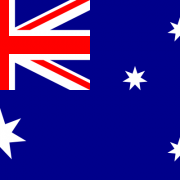
Unreliable Geographies by Aeneas McHaar
No. 15: Lake Eyre, Australia
28º 22' S, 137º 22' E
Not many places rival the grandeur of Broughton’s former Canonmills Loch, a more or less stagnant sink for many years situated in the frost-hollow between today’s Eyre Place, Rodney Street and Royal Crescent.
[img_assist|nid=1425|title=|desc=|link=node|align=right|width=200|height=174]Of those which do, perhaps the Lake Eyre Basin (LEB) – located 700km north of Adelaide – is most notable. ‘Huge and remote, the vast expanse of the shimmering white salt plain is matched in intensity only by the impossibly blue desert sky,’ enthuses an Australian website, struggling to make a tourist magnet out of three featureless and dispiriting deserts.
An unimaginably flat drainage area, LEB covers roughly one-sixth of the entire continent, occupying approximately 1,140,000 square kms in a manner which would take three days for the Amazon River to fill if for some reason the Amazon River found itself thousands of miles out of position, still in touch with the Andean meltwaters, and with nothing better to do. Over the past 60 million years it has very gradually sunk until, at its current elevation of 16 metres below sea level, all rivers remotely nearby drain towards it rather than towards the ocean.
For the last 10 million years, as Australia has drifted northwards, the LEB has become more and more arid, and over the last 2.6 million years its two lakes – the larger of which is 144 km wide and 77 km long or more accurately vice versa – have dried up. Most of the time. Occasionally, however (about once every eight years and at this very moment), the heavens open, the Outback Georgina, Diamantina and Cooper Rivers gather into torrents in faraway Queensland, and the LEB fills with 1.5 metres of saline solution which is a magnet to all manner of wildlife.[img_assist|nid=1427|title=|desc=|link=node|align=right|width=640|height=429]
Pelican, ibis, kite, cormorant and seagull breed in vast numbers, as do predatory dingo, seven species of fish (bony bream and subspecies of golden perch), seven species of benthos, three of zooplankton, flora including four kinds of emerged or submerged macrophytes, and a species of bacteria which produces glycerine and turns the water pink. The same water crystallises around anyone or anything settling too long in the same spot, which is a major incentive to keep moving. ‘These boom periods are when the whole biological system takes off,’ writes Professor Kingsford, a zoologist who has studied the area exhaustively. ‘Whatever level you're looking at, from the microscopic up to the pelican, they're doing their thing.’
[img_assist|nid=1429|title=|desc=|link=node|align=right|width=640|height=197]Humans, too, are attracted to Lake Eyre. Some make the day’s drive from the edge of the saltpan to the water’s brim in order to observe the astonishing temporary ecology. Others, like Bob Backway – Commodore of the Lake Eyre Yacht Club – come from far and wide (some even from Scotland) to sail catamarans on the boundless brine. They do it because it’s there, difficult to reach, and unlike anywhere else, which I suppose is why Australians in general remain Down Under.
Nobody knows for sure how birds learn of the temporary and irregular existence of this inland sea. However, the presence of sailors can be attributed in part to the phenomenon’s ‘first’ (white) discovery by Edward John Eyre in 1840.
[img_assist|nid=1428|title=|desc=|link=node|align=right|width=171|height=200]Born in Whipsnade (the Bedfordshire origin of more rhinoceroses than explorers) in 1815, Eyre was the son of a vicar, and brought up and educated in Yorkshire which experience seems to have inured him to life’s little hardships. As an adult he moved to Sydney where he took up livestock farming on his 18th birthday and made a killing. He used the money to fund two expeditions starting in 1839: to Finders Range and west of Ceduna. Accompanied by ‘Wylie’ – his aboriginal guide – he travelled almost 2,000 miles to Albany in Western Australia via the treeless Nularbor Plain and the bite-filled Great Australian Bight, suffering no end of hideous privations en route and earning himself a posthumous place on an appropriately pink Australian postage stamp in 1970. Judging from this, and a photograph taken in old age (see below), his features combined the visionary remoteness of Leo Tolstoy with the proximate homicidal tendencies of Wyatt Earrp.
From 1848–53 Eyre served as Lieutenant-Governor of New Munster Province in New Zealand, and from 1854 was Governor of various Caribbean islands, including Jamaica where he suppressed the Morant Bay Rebellion (1868) with such decisive brutality that there were unsuccessful moves to have him prosecuted. He soldiered on indomitably until 1901.
Elephant-minded readers may recall that it was during the Morant Bay Rebellion that an Edinburgh missionary – the Reverend Andrew Hogg – encountered difficulties in the fledgling settlement of New Broughton. New Broughton was, of course, the subject of the first of these unreliable geographies and we are thus brought mysteriously and wonderously full circle.
[img_assist|nid=1430|title=|desc=|link=node|align=center|width=634|height=640]